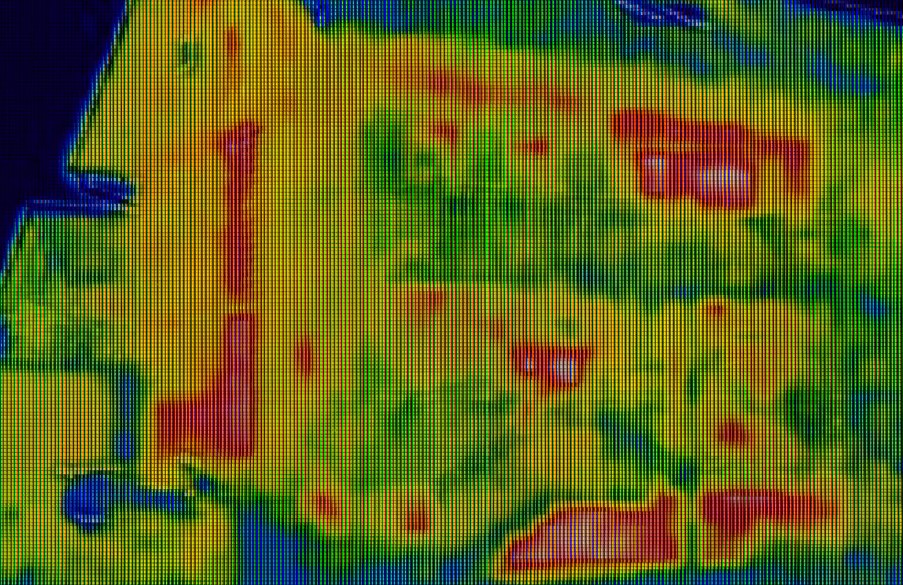Passivhaus vs SAP
Contents |
[edit] Introduction
A long-running debate between different groups of green house building experts seems to be reaching a creative conclusion.
[edit] Interpreting energy efficiency
Energy efficiency is one of those issues which usually means something different to each expert you ask. Some talk about it in terms of carbon. Others talk about space heating demand and others focus on fuel poverty and the need to reduce overall energy costs.
Consider the design, construction and marketing of green new homes, and you get the same thing. Some are promoted as ultra-low energy, some are ‘zero carbon’ or even ‘carbon positive’ and some are celebrated for very low fuel bills.
[edit] EPCs
The law requires the production of an Energy Performance Certificate (EPC) for all newly build homes and for existing dwellings at the point of sale or rent. Most people just think of an EPC as the colourful A to G energy efficiency rating.
That rating is basically a cost index which tells you how expensive a home is to run. So far, so good – the house builders and estate agents can work with that.
| Energy Performance Certificates (EPC) go online |
|
An EPC register was introduced by the UK Government in September 2020 to improve access to all EPCs in England, Wales and Northern Ireland. This register provides online copies of EPCs, accessible via a link given to the client by the energy assessor once the EPC has been lodged. All existing EPCs are also being moved across to the online format. The Scottish register is unaffected. It continues to be provided by the Energy Savings Trust for the Scottish Government. An Energy Performance Certificate is required for properties when constructed, sold or let. It is typically valid for 10 years. |
But there is a fundamental problem with EPCs for some experts, as the EPC for a new home is calculated using the Standard Assessment Procedure (SAP). This is a building physics modelling method which has also been at the heart of the compliance framework for UK Building Regulations since 1995.
[edit] SAP
SAP is regularly and vocally criticised for being inaccurate. It assumes every dwelling is at the centre of the country, somewhere in the east Pennines, so that the climate conditions are always the same. It uses other assumptions to figure out a ‘typical’ number of occupants and their ‘typical’ heating patterns.
While there are also an environmental impact rating and an indication of space heating demand expressed in kilowatt hours per year (kWh/year) generated by SAP calculations and hidden right at the back of the EPC report, these are not considered accurate. They do not cover all fuel uses and the carbon data needs updating; homebuyers do not tend to pay any attention to those ratings anyway.
SAP is a blunt tool, admittedly, but one that allows us to compare across different dwellings in different locations. So, it has its uses!
[edit] PHPP
In another camp is the Passivhaus community which makes use of the Passivhaus Planning Package (PHPP). PHPP is another building physics methodology which focuses on calculating a kWh/Year rating for a new dwelling and uses very specific local climate data and other inputs to understand how a home will actually perform in use.
Organisations seeking to drive improvements in energy efficiency should use this measurement, space heating demand, as the primary metric, say the Passivhaus experts.
[edit] So who is right?
Well, all I know is that every year of squabbling between green building experts just leads to more delay in achieving our goals. So three leading organisations in this space – the AECB, Passivhaus Trust and Elmhurst Energy – got together to carry out a detailed piece of technical research comparing PHPP and SAP calculations and outputs to see if they could put the arguments to bed.
It turns out that the two sides are not as far apart as we once thought.
We have concluded, contrary to some rhetoric, that the core of the models is very similar. While PHPP allows a user to enter more data in some areas and considers some elements such as thermal junctions differently from SAP, the physics behind the methodologies that calculate the energy efficiency of the building fabric is very similar.
Perhaps we should not have been that surprised. Physics is physics, after all.
[edit] Pooling resources
This work allows us to move forward on a solution to help house builders, designers, energy consultants and other green building professionals. This should finally allow for a direct and fair comparison between all homes, whatever their type or level of energy performance.
Our objective is to learn from the strengths and weaknesses of both approaches, thus improving both. We want to make it easier to demonstrate compliance for both Building Regulation purposes and for those who want to build homes that are above and beyond the minimum regulatory standards.
We already have creative ideas about how we could present key performance data for a property in a clear and visually engaging manner. We also wish to give equal prominence to carbon emissions, energy demand, running costs and fabric efficiency.
We think we can provide clarity regarding the scope of the of the energy use covered, such as space heating only, regulated energy or all energy use. We can standardise the units of measurement of a home’s performance to allow for direct and fair comparison. We can develop a common energy reporting process capable of being driven by either PHPP or SAP as the starting point.
Both SAP and PHPP are effective tools at what they do. It is horses for courses. But bringing them together in some way and aligning with national regulations will make life easier for energy assessors and house builders while also presenting consumers with a clear and unambiguous statement of a home’s overall performance.
Given a common set of easy-to-understand results, we will all be able to make a fair comparison between homes, and therefore make a choice based on what matters most to us.
At its heart, this is a story of two different approaches, but one common goal. All of us working on this initiative agree that our aims are the same – our commitment is to facilitate the building of more energy efficient homes. What are currently considered to be high performing homes will, very soon, become the norm. By working together that goal will be easier to achieve.
This article originally appeared in the Architectural Technology Journal (at) issue 135 published by CIAT in fall 2020 under the headline, 'So which is best – Passivhaus or SAP?' It was written by Stuart Fairlie, Technical and Operations Director, Elmhurst Energy.
--CIAT
[edit] Related articles on Designing Buildings
Featured articles and news
RTPI leader to become new CIOB Chief Executive Officer
Dr Victoria Hills MRTPI, FICE to take over after Caroline Gumble’s departure.
Social and affordable housing, a long term plan for delivery
The “Delivering a Decade of Renewal for Social and Affordable Housing” strategy sets out future path.
A change to adoptive architecture
Effects of global weather warming on architectural detailing, material choice and human interaction.
The proposed publicly owned and backed subsidiary of Homes England, to facilitate new homes.
How big is the problem and what can we do to mitigate the effects?
Overheating guidance and tools for building designers
A number of cool guides to help with the heat.
The UK's Modern Industrial Strategy: A 10 year plan
Previous consultation criticism, current key elements and general support with some persisting reservations.
Building Safety Regulator reforms
New roles, new staff and a new fast track service pave the way for a single construction regulator.
Architectural Technologist CPDs and Communications
CIAT CPD… and how you can do it!
Cooling centres and cool spaces
Managing extreme heat in cities by directing the public to places for heat stress relief and water sources.
Winter gardens: A brief history and warm variations
Extending the season with glass in different forms and terms.
Restoring Great Yarmouth's Winter Gardens
Transforming one of the least sustainable constructions imaginable.
Construction Skills Mission Board launch sector drive
Newly formed government and industry collaboration set strategy for recruiting an additional 100,000 construction workers a year.
New Architects Code comes into effect in September 2025
ARB Architects Code of Conduct and Practice available with ongoing consultation regarding guidance.
Welsh Skills Body (Medr) launches ambitious plan
The new skills body brings together funding and regulation of tertiary education and research for the devolved nation.
Paul Gandy FCIOB announced as next CIOB President
Former Tilbury Douglas CEO takes helm.
UK Infrastructure: A 10 Year Strategy. In brief with reactions
With the National Infrastructure and Service Transformation Authority (NISTA).

























